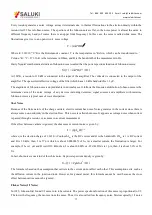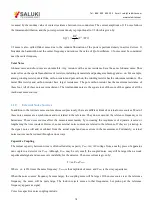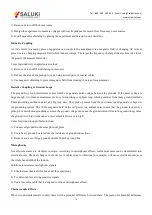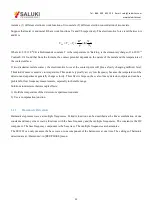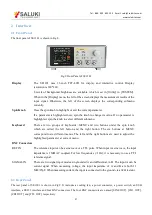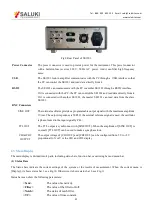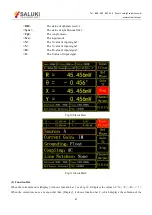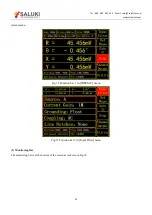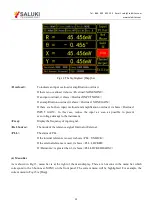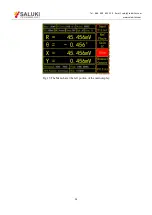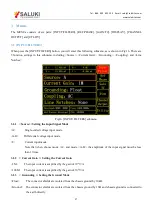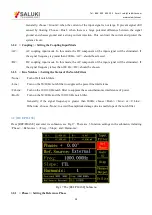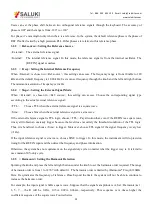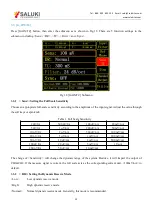
Tel: 886. 909 602 109 Email: sales@salukitec.com
www.salukitec.com
15
causes about 0.16% of full scale (7.9nV/5μV). The peak to peak noise will be about 0.8% of full scale.
Assume that the signal input is from a low impedance source. The Johnson noise of resistors equals to
R
13
.
0
. Take
a 100
Ω
resistor for example, its noise is greater than the input noise of SE1201. The overall noise of multiple noise
sources is determined by the square root of the sum of the squares of the individual noise figures. For example, if a 1k
Ω
source impedance is used, the Johnson noise will be
Hz
nVrm
/
11
.
4
.
At low gains (sensitivities above 50
μ
V), the gain is not high enough to amplify the input noise to a level greater than the
noise of the A/D converter. In these cases, the output noise is mainly the A/D noise. At these sensitivities, the DC gain is
low and the noise at the output is negligible.)
Notch Filters
There are two notch filters in the signal amplifier chain in SE1201. They are pre-tuned to the line frequency and twice the
line frequency. When the largest noise signals are at the power line frequencies, these filters can remove noise signals at
these frequencies. Removing the largest noise before the final gain stage will reduce the dynamic reserve required to
perform a measurement.
To prevent such a situation, it is necessary to improve the signal amplifier chain. If the required dynamic reserve without
these notch filters is below 60 dB or if the minimum reserve is sufficient, then these filters do not improve the
measurement obviously.
Do not use notch filters when making measurement near the notch frequencies. Notch filters have a finite range of
attenuation, generally about 10 Hz. Thus, if the lock-in is measuring at 90Hz, do not use the 80 Hz notch filter. Otherwise,
the signal will be attenuated and the measurement will be wrong. Besides, notch filters also have effect on phase shifts
measurements.
Anti-aliasing Filters
After signal filtering and amplification, there is an anti-aliasing filter, which is required by the signal digitization process.
According to the Nyquist criterion, the sampling frequency of signal must be at least twice the highest signal frequency.
For example, the highest signal frequency is 100 kHz, then the sampling frequency is 312.5 kHz. However, signals above
156 kHz cannot reach the A/D converter. These signals would violate the Nyquist criterion and be under-sampled. The
result of under-sampling is to make the higher frequency signals appear as lower frequency signal in the digital data
stream. This would make the measurement wrong.
To avoid under-sampling, the analog signal is filtered to remove signals above 154 kHz. This filter has a flat pass
bandwidth from DC to 120kHz so that it would not affect measurements in the operation range of the lock-in. The filter
rolls off from 120 kHz to 154 kHz and achieves an attenuation of at least 100dB above 154 kHz.
Input Impedance
The input impedance of SE1201 is 10 M
Ω
. If a higher input impedance is desired, the SE1201 remote preamplifier must
be used so that the SE1201 has the maximum input impedance of 100 M
Ω
.

















